One of them provides me with seventeen cells, the highest number appearing in my census of the Megachile clan. Most of them are lodged in the nymphal chamber of the Capricorn; and, as the spacious recess is too wide for a single row, the cells are arranged in three parallel series. The remainder, in a single string, occupy the vestibule, which is completed and filled up by the terminal barricade. In the materials employed, hawthorn-and paliurus-leaves predominate. The pieces, both in the cells and in the barrier, vary in size. It is true that the hawthorn-leaves, with their deep indentations, do not lend themselves to the cutting of neat oval pieces. The insect seems to have detached each morsel without troubling overmuch about the shape of the piece, so long as it was big enough. Nor has it been very particular about arranging the pieces according to the nature of the leaf: after a few bits of paliurus come bits of vine and hawthorn; and these again are followed by bits of bramble and paliurus. The Bee has collected her pieces anyhow, taking a bit here and there, just as her fancy dictated.
Nevertheless, paliurus is the commonest, perhaps for economical reasons.
I notice, in fact, that the leaves of this shrub, instead of being used piecemeal, are employed whole, when they do not exceed the proper dimensions. Their oval form and their moderate size suit the insect's requirements; and there is therefore no necessity to cut them into pieces. The leaf-stalk is clipped with the scissors and, without more ado, the Megachile retires the richer by a first-rate bit of material.
Split up into their component parts, two cells give me altogether eighty-three pieces of leaves, whereof eighteen are smaller than the others and of a round shape. The last-named come from the lids. If they average forty-two each, the seventeen cells of the nest represent seven hundred and fourteen pieces. These are not all: the nest ends, in the Capricorn's vestibule, with a stout barricade in which I count three hundred and fifty pieces. The total therefore amounts to one thousand and sixty-four. All those journeys and all that work with the scissors to furnish the deserted chamber of the Cerambyx! If I did not know the Leaf-cutter's solitary and jealous disposition, I should attribute the huge structure to the collaboration of several mothers; but there is no question of communism in this case. One dauntless creature and one alone, one solitary, inveterate worker, has produced the whole of the prodigious mass. If work is the best way to enjoy life, this one certainly has not been bored during the few weeks of her existence.
I gladly award her the most honourable of eulogies, that due to the industrious; and I also compliment her on her talent for closing the honey-pots. The pieces stacked into lids are round and have nothing to suggest those of which the cells and the final barricade are made.
Excepting the first, those nearest the honey, they are perhaps cut a little less neatly than the disks of the White-girdled Leaf-cutter;no matter: they stop the jar perfectly, especially when there are some ten of them one above the other. When cutting them, the Bee was as sure of her scissors as a dressmaker guided by a pattern laid on the stuff; and yet she was cutting without a model, without having in front of her the mouth to be closed. To enlarge on this interesting subject would mean to repeat oneself. All the Leaf-cutters have the same talent for ****** the lids of their pots.
A less mysterious question than this geometrical problem is that of the materials. Does each species of Megachile keep to a single plant, or has it a definite botanical domain wherein to exercise its liberty of choice? The little that I have already said is enough to make us suspect that the insect is not restricted to one plant; and this is confirmed by an examination of the separate cells, piece by piece, when we find a variety which we were far from imagining at first.
Here is the flora of the Megachiles in my neighbourhood, a very incomplete flora and doubtless capable of considerable amplification by future researches.
The Silky Leaf-cutter gathers the materials for her pots, her lids and her barricades from the following plants: paliurus, hawthorn, vine, wild briar, bramble, holm-oak, amelanchier, terebinthus, sage-leaved rock-rose. The first three supply the greater part of the leaf-work; the last three are represented only by rare fragments.
The Hare-footed Leaf-cutter (Megachile lagopoda, LIN.) which I see very busy in my enclosure, though she only collects her materials there, exploits the lilac and the rose-tree by preference. From time to time, I see her also cutting bits out of the robinia, the quince-tree and the cherry-tree. In the open country, I have found her building with the leaves of the vine alone.
The Silvery Leaf-cutter (Megachile argentata, FAB.), another of my guests, shares the taste of the aforesaid for the lilac and the rose, but her domain includes in addition the pomegranate-tree, the bramble, the vine, the common dogwood and the cornelian cherry.
The White-girdled Leaf-cutter likes the robinia, to which she adds, in lavish proportions, the vine, the rose and the hawthorn and sometimes, in moderation, the reed and the whitish-leaved rock-rose.
The Black-tipped Leaf-cutter (Megachile apicalis, SPIN.) has for her abode the cells of the Mason-bee of the Pebbles and the ruined nests of the Osmiae and Anthidia in the Snail-shells. I have not known her to use any other materials than the wild briar and the hawthorn.














